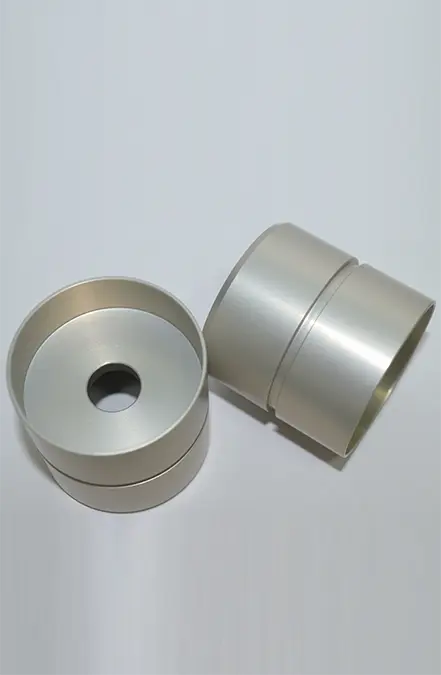HARD ANODIZING
The anodizing process is an electrolytic passivation of aluminium during which the material is covered with a layer of alumina. The properties of the aluminium oxide layer depend greatly on the process and not so much on the type of aluminium. Due to the fact that the aluminium oxide layer is anhydrous and porous, it can be painted, introducing different organic or mineral pigments in the pores. We have a black organic paint that make a black anodized finish.
The anodized parts can be sealed. In the sealing process, that is carried out with boiled water, the aluminium oxide (alumina) layer fix a water molecule forming monohydrated alumina. During this process the volume of the layer increase and the porous are closed.
Unsealed layers are hard, adherent and ware resistant, but do not offer corrosion protection. Usually are used as support for organic finishes, dry lubricants, oils, waxes, etc. The sealed anodized layers are denser and are used as anticorrosion protection.
The layers obtained with chromic acid anodizing are opaque, softer, and thinner and have better ware resistance than the anodized layers obtained with sulphuric acid. Also, the chromic anodized layers are more ductile and for similar thickness, have more corrosion resistance than the sulphuric anodized layers.
The layers obtained with sulphuric acid are usually transparent, thicker and more porous than the ones obtained with chromic acid, and for that are better substrates for painting.
Anodizing is not an effective protection for corrosion under low tensions. Also, though is more common for the sulphuric anodizing than for the chromic anodizing, generally anodizing lowers the fatigue limit of the base material.
The anodized parts suffer a dimensional increment of the superficial layer thickness of 50%, half of the thickness being on the surface, whereas the other half goes in the base material.
Hard anodizing is used to obtain a finish with the hardness equivalent of a casting steel and with the lightness and the resistance of aluminium. In the hard anodizing process the obtained layers are thicker than in the case of normal sulphuric acid anodizing or chromic acid anodizing. This is achieved by a low concentration of the electrolyte and at low temperatures.
For hard and sulphuric acid anodizing we have working tanks up to 1300 L and for chromic acid anodizing we have working tanks up to 1900 L. The black sealing is made in tanks with capacity of 900 L.
Our work is adapted to aeronautic industry. The sulphuric acid anodizing is done according to I+D-P-213 specification and the chromic acid anodizing is done according to AIPS 02-01-001 specification.




